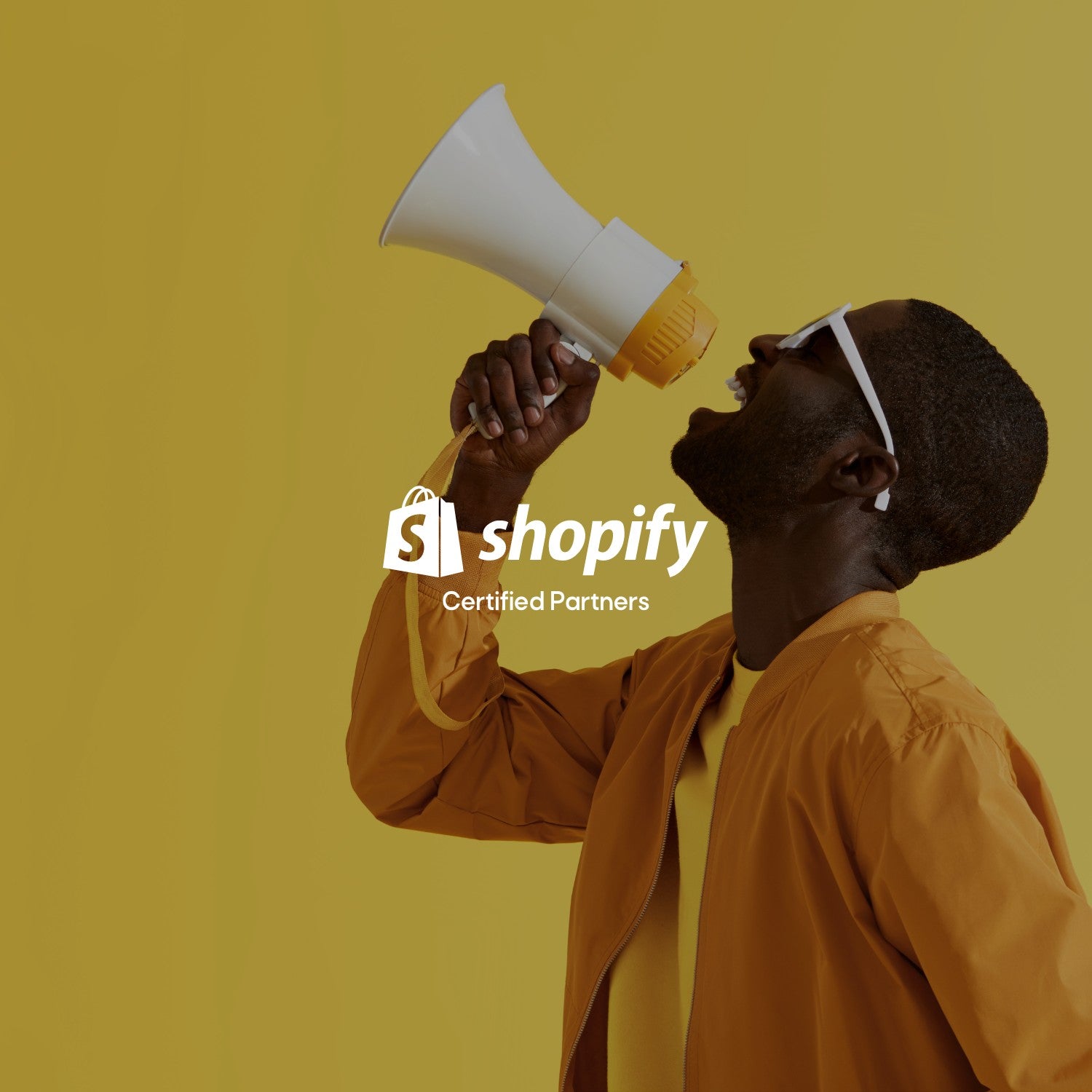Showing sincere appreciation is one of the easiest ways to build a closer relationship with buyers as they move through your customer journey map. It’s simple, but remarkably few companies ever take the time to genuinely thank customers for their business.
When it comes to standing out against entrenched competitors, it’s critical for ecommerce businesses to find their moments of opportunity. It’s rarely practical to compete on price or efficiency. However, new and growing stores do have a set of differentiators worth investing in: product, brand, and customer service.
Companies that focus on creating meaningful customer experiences can choose to compete on loyalty and word of mouth, beat the behemoths, and carve out their own place in the market.
In this pursuit, thanking customers for their purchase goes a long way. In fact, 68% of businesses have lost a customer because they feel a company is indifferent to them, and nearly half of US consumers say customer appreciation is an indispensable part of providing excellent care.
Being purposeful and personal when thanking your customers can help showcase the human aspect of your brand, create connections, and build customer retention.
Why show customer appreciation?
Customer appreciation is the art of showing gratitude toward your customers. It’s a consistent and unselfish approach to engagement that shows customers you value them. This can include things from including thank you letters with first purchases to sending valued customers exclusive deals.
A simple expression of gratitude can create a good customer experience and improve how someone views your company. We can see this in action through purchases. In fact, 86% of buyers are willing to pay more for a great customer experience.
The three objectives when implementing customer appreciation include:
- Make customers loyal. As described by Harvard Business Review, it can cost between five to 25 times more to acquire a new customer. So, it’s a smart move to retain as many customers as possible.
- Have more profitable customers. Satisfied customers spend more on average with less hassle. As you can see from research done by Bain & Company, a 5% lift in retention can increase profits by 25% to 95%.
- Have customers talk positively about your brand, also known as word-of-mouth marketing. 92% of customers consider recommendations from friends and family the most credible forms of advertising, which leads to higher referral rates for your business.
There’s no doubt that companies with better customer experiences outperform their competitors. Showing appreciation is an easy way to build meaningful relationships with customers and make them feel valued.
How to thank your customers
Sending the perfect thank you doesn’t need to be complicated. In fact, most consumers don’t have a high bar when it comes to appreciation: a study by TD Bank found that 60% of consumers said appreciation should be conveyed by saying thanks directly to the individual, while 44% agreed that thank yous should be personalized.
Thank customers without an overt expectation of anything in return. For example, don’t ask them to “share on social media,” and don’t pester them to buy in the same breath. Simply express gratitude, personally and directly, for being a customer and placing trust in you to deliver. That’s enough to create a connection.
1. Who are you thanking?
It might feel overwhelming, or even disingenuous, to personally thank every customer with every order—and as your business grows, it will be impossible to manage all by yourself. For that reason, it can be helpful to segment customers into the groups that you’d like to prioritize.
For example, handing out a swanky gift package with every order is a surefire way to blow your budget. But segmenting high-value customers and sending them a handwritten note with a branded gift can cement an already positive relationship. Here are a few ways you can group your customers for different tiers of thank yous:
- Every customer
- Every repeat customer
- Anyone who’s written in to support
- Customers on their birthday
- High-value customers
- Customer loyalty program members
2. Set an appropriate budget
The budget for your thank you program will be linked with the number of customers you want to reach out to. But even if you’re hoping to show gratitude to all of your customers, you don’t need to spend a ton of money to create moments of delight.
In The Thank You Economy, Gary Vaynerchuk writes: “It’s not the money that makes these efforts shocking and awesome, it’s the care and creativity involved.” Frugal wows are often just as effective at creating that connection.
We’ve got lots of examples of simple cost-effective ways to thank your customers below.
3. Build a repeatable process
Depending on whether you’re including a thank you in every box or just occasionally sending out swag, decide on a repeatable process to get those thank yous in the hands of your customers. It doesn’t have to be automated, but structuring the process will make sure it happens.
If you’ve got a team working for you, provide an easy way for them to nominate customers for thanks. It might be a Google form or a Friday afternoon session writing handwritten cards.
Pulling the entire team into these moments of delight creates a culture of gratitude for your customers.
Six ways to send thank you messages to customers
While creative planning and smart decision-making set the stage for delight, at the end of the day, you still need a few simple ideas to act on.
If you’re in need of a little inspiration, here are six ways you can spread gratitude around. We’ll also share a few examples of businesses that go the extra mile for their customers.
- Send handwritten thank you notes
- Include package inserts
- Provide free gifts or samples
- Create personal connections with video
- Offer post-purchase discounts
- Spotlight your customers
1. Send handwritten thank you notes
This is a tried and true way to thank your customers. Writing a personalized thank you note shows that there’s a human involved behind the scenes and behind the screen.
Thank you notes are effective because they’re a bit of a lost art. Think about the last time you actually sent a handwritten letter instead of quickly firing off an email or a Facebook message. Those mediums allow for incredible efficiency, but a handwritten card goes beyond the ephemeral nature of our digital inboxes and creates something tangible and meaningful.
Remember these five steps when writing the perfect thank you note:

Let’s look at some examples of good handwritten notes to customers.
John’s Crazy Socks
A brand that describes itself as “a business built on love” knows a thing or two about making a connection. Customers almost always receive a personalized, handwritten note inside their sock order.

Nalu
Online store Nalu sends a handwritten thank you with every customer’s purchase of new slides. It includes a DIY note card and visuals from Nalu’s latest spring campaign to build hype and excite customers for upcoming products.

Epic Provisions
Sending a handwritten note after a difficult customer support interaction can help create a positive resolution. Epic Provisions followed up with this customer after they were unhappy with a recent order and made a fan for life: “Best customer service ever!”

ZULZ Bag Co
The card says it right on the front: “Thank you!” ZULZ Bag Co. likes to add a handwritten card and stickers to orders, welcoming customers to the ZULZ family.

Chewy
When Julia Alena contacted Chewy’s customer support, she wasn’t expecting much. But not only did she get the resolution she wanted, she also received hand-drawn illustrations of her dogs! That’s going above and beyond handwritten notes, but probably earned Chewy a customer for life.

While sending a handwritten note in every order might not be scalable, you can always set a monthly goal for yourself or for your team. Brandon Eley, founder of 2BigFeet, explains how he ensures he contacts as many customers as possible: “It's my goal to send 1,000 cards every year, which works out to just four cards every weekday.”
You might also send out thank you cards after replying to a customer, a special order, or a holiday. It doesn’t just have to be a card inside the order.
If you'd like to streamline this process a bit, you can use a service like Postable or Touchcard to send out thank you notes on your behalf. For one-off notes, or if you’d like invest a bit further in this idea, there are a number of online options for sourcing quality cards that will brighten up your customers’ mailboxes, including Lovepop, Galison, E. Frances, Burro Goods, and Paper Luxe (all built on Shopify).

2. Include package inserts
Adding something small to an order that’s heading out the door is a great way to say thank you. You’ve already paid for the shipping and the box, so this is one of the most cost-effective ways to give customers a little extra delight.
Packaging inserts are all about exceeding customer expectations. Unboxing is an experience in itself, and customers look forward to the moment they get to hold their new product in their hands. They are primed to be “delighted” with just a little extra effort. It’s also an opportunity to add value to the order through beautiful how-to manuals, and a chance for upsells.
Below are a few standout examples from stores who understand the value of delivering a small surprise.
Frank Body
The Frank Body brand is bold, to the point, and all about beautiful bodies. It includes a package insert with its body scrub orders that reinforces the brand, offers a simple how-to, and encourages customers to stay in touch through social media.

Grilla Grills
Grilla Grills sells smokers and grills online. Every order comes with a couple of free gifts, like thank you stickers, koozies, and even a handwritten note to put a smile on customers’ faces.

Package inserts can be as targeted or as catch all as you like. Just make sure you keep a stack next to your order packers and toss one in each box. Need to stock up on package inserts? Check out these providers for high-quality stickers, business cards, and flyers:
Stickers
Business cards or promotional material
3. Provide free gifts or samples
Is there anything customers like more than a free sample? Tossing in a small sample or gift with their order is a great way to say, ”Thank you for purchasing.”
Free samples aren’t just an amazing way to surprise and delight your customers, they also showcase something the customer hasn’t tried yet. If they like it, you might even see them purchase it in their next order. Just be sure to try and match the sample to your customer’s profile as much as possible to make sure it’s something they can use.
Beardbrand throws a couple samples of its top-selling products for customers to try into bigger orders.

4. Create personal connections with video
If you want to take things a step further, try recording a personalized thank you video for your customers. The great part of videos is that it’s impossible to fake being personal. The customer knows how much time you’ve really put in.
Personalized videos come across as very thoughtful because they are time-consuming, manual work. Send videos in a post-purchase follow-up or as a separate interaction entirely. Videos are particularly great for special occasions and holidays where you can be creative with the theme.
Popov Leather
Every new customer gets a personal video from the founder and creator, Ryan Popoff. They aren’t particularly scripted, but they are warm and welcoming and showcase the humanity behind the brand. You know you’re not just getting a factory-made item.

Wistia
Everyone at Wistia uses a video signature that features a little introduction to who they are. These could easily be adapted for thank you videos on receipts or sent out during the holidays.
Videos are a great experiment to run if only to see how customers react. There are many different ways to use videos in thanking customers, which means you can really get creative. Here are a few tools to check out to create quick, personalized videos:
5. Offer post-purchase discounts
Rewarding loyal customers with discounts and coupons is a great way to keep them coming back while thanking them for their patronage. Although you have to be careful with discounts, as they can train customers to wait for deals, sending a discount to a new customer is usually a cost-effective way to get them to return and make another purchase.
Outdoor Research
Not only are its emails really inspiring, Outdoor Research gives a discount code for customers to enjoy 15% off their next order.

Julep
Julep runs a makeup box subscription and always adds a little bonus for customers who need to stock up.

Writing copy for your coupons can be a bit tricky, because you don’t want to come off as trying to make a sale or as overly pushy. Use words to promote the exclusivity of the coupon like:
- Just for you
- As a thank you…
- A customer perk for you!
- For our loyal customers
Discounts can either be sent separately, as a package insert, or in a thank you email. If you’re creating discounts, make sure you use a unique coupon code so you can track how effective it is.
6. Spotlight your customers
Showcasing your customers is a great way to publicly share how much you appreciate them.
User-generated content (UGC) is especially great in the creative industries, because your customers rely on exposure to grow their own audience. For example, hairdressers love to be featured on Instagram. Small businesses love a shout-out on Twitter or on a blog. It can help give them credibility and gain clients. Plus, it creates a bond between you and them.
Luxy Hair
Showing off its product is just one advantage of Luxy Hair’s user-generated content. It also helps its clients build their brand through sharing beautiful images.

Wool and the Gang
WATG will frequently share its customers’ knitting projects on Instagram. Its customers love it, and it gives its feed more of a community feel.
To find great content to share, create a hashtag that customers can use on their own posts. Before sharing content, make sure you ask the owner for permission.

“Thank you for your purchase” templates
Now that you have an idea of what a good business thank you looks like, let’s check out some templates you can use to say “Thank you for your order.” You can copy and paste these customizable templates into an email or note and send them to customers after they buy something.
Coupon code
Use this template after a first-time purchase to get customers back to your store and buying more. It’s standard to give a 10% coupon, but you can give whatever works best for your business.
Thank you so much for your order! We really appreciate it.
Enjoy 10% off your next purchase with this coupon code: THANKYOU10

Follow-up
Use the follow-up template to say thank you, but also to check on how your customer is feeling about their purchase. You can add a review request and a coupon to this email if you like.
Hey, [FIRST NAME]. Settled in yet? It’s been [NUMBER OF DAYS] since your [BRAND NAME] journey. We’re keen to know how you are getting along.

Order received
This email template lets customers know you are working on their order and thanks them for a purchase.
Thanks, [FIRST NAME]! We got your order, and it’s really lovely. We’ll send you an email when it ships.

Reward
Similar to the coupon thank you card template, but the message is a bit more warm and friendly. The reward can be a gift card for a recent purchase.
Thanks for your support! We think you’re pretty awesome. As a token of our gratitude, below is a reward you can use during your next visit. Enjoy!

A thank you goes a long way
There are so many different ways to thank your customers and create moments of delight post-purchase. Remember, the key is to be personal, thoughtful, and genuine. Customers—and people in general—love a sincere thank you but dislike insincerity.
When you have an attitude of gratitude, creating connections with customers is natural. Building these customer relationships gives you the opportunity to elevate your brand above the competition.
Illustration by Lynn Scurfield
Design by Brenda Wisniowski













